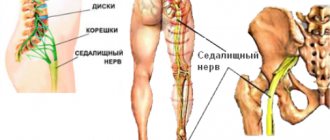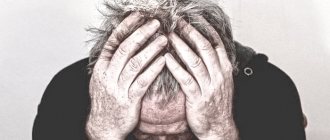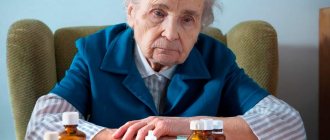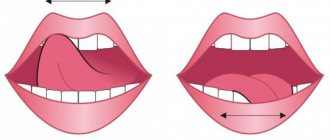Action of neurometabolic agents
Nootropics have the following characteristics regarding their effects on the human body:
- stimulate mental activity;
- improve concentration;
- have a moderate sedative effect;
- improve memory;
- contribute to the body’s adaptation to unfavorable environmental factors by increasing mental stability in the event of excessive stress, hypoxia or other conditions.
Neurometabolic stimulants have an effect not on qualitative, but on quantitative indicators of the functioning of the brain and central nervous system. In this way, this group of drugs differs from psychostimulants, which activate a qualitatively different brain activity. The second difference between the classes of substances is that neurometabolic drugs do not show activity after the first use, but with long-term use. The effect of stimulants is noticeable and expressed immediately after the first use.
The direct effect of nootropics on the body is ensured through the following mechanisms:
- Stimulating energetic interactions in neurons. It is achieved by activating the synthesis of adenosine triphosphate, providing antihypoxic (reducing the need for neurons in oxygen) and antioxidant (suppressing the formation of free radicals in cells) actions.
- Activation of anabolism in the central nervous system. Provided by stimulating the synthesis of RNA and protein compounds.
- Stabilizing effect on cell membranes.
- Improved glucose oxidation.
- Activation of neurotransmission in the central nervous system.
- Neuroprotection – increasing the resistance of neurons to negative environmental factors.
In addition to the direct effect, nootropics have an indirect effect on the glutamatergic, monoaminergic and cholinergic systems in the central nervous system.
What drug can be replaced and with what?
Glycine is produced only under this name; it is close in pharmacological action to Phenibut (synonyms: Noofen, Anvifen), but their active ingredients are different. Piracetam is an international name; it is sold in pharmacies both as a generic drug (that is, Piracetam) and under the trade names Nootropil, Lucetam.
We recommend reading about the features of using Glycine and Valerian. From the article you will learn about the compatibility of two drugs, similarities and differences, indications for prescription, how to take them simultaneously. And here is more information about contraindications to taking Glycine.
Piracetam and Glycine are used to increase mental performance, treat the consequences of vascular diseases of the brain, neuroinfections, and traumatic brain injury. They can be prescribed separately or together.
Effect of taking
The above-described effect of nootropics on the human body, exerted through the indicated mechanisms, provides the following effects:
- Activation of thinking processes, concentration, memory, speech, nootropic effect.
- Antiasthenic effect – reduction of physical and psychological lethargy, fatigue, weakness.
- Stimulates clarity of consciousness, relieves drowsiness.
- Reducing anxiety levels, sedative effect.
- Relieving psychomotor retardation, apathy, inertia.
- Adaptation to exogenous influences.
- Relieving depression.
- Immunostimulation.
- Autonomic manifestations – relief of migraines, dizziness.
- Antiepileptic effect.
- Antiparkinsonian effect.
- Hypoglycemia – regulation of glucose levels.
- Energy result.
- Acceleration of protein synthesis.
- Lipolysis is the breakdown of fats.
The above results from the use of various neurometabolic drugs are achieved after a course of taking the drugs.
Areas of application
Nootropic drugs are prescribed in such branches of medicine as neurology, psychiatry, surgery, pediatrics, narcology, and obstetric practice.
In pediatrics, the use of neurometabolic stimulants is indicated for the following diseases and conditions:
- cerebral palsy;
- delayed speech and mental development;
- attention deficit disorder;
- mental retardation;
- consequences of perinatal trauma.
In the treatment of adult patients, this group of drugs is used for the following pathologies:
- dysfunction of the brain in organic brain syndrome;
- ischemic strokes;
- neuroinfections;
- toxicity of various origins;
- dementia of various etiologies;
- chronic cerebrovascular syndrome;
- circulatory disorders in the brain;
- neurotic disorders;
- organic psychosyndrome;
- chronic alcoholism;
- intellectual-mnestic syndrome;
- vegetative-vascular dystonia;
- urinary disorders;
- hyperkinesis.
As part of complex therapy, some drugs of the described medicinal group are used in ophthalmology.
Is it always possible to take Piracetam and Glycine together?
Piracetam and Glycine are not used together in the following pathological conditions:
- decreased blood clotting or the need to use blood thinners;
- internal or traumatic bleeding;
- increased function of the thyroid gland, adrenal glands;
- convulsive syndrome;
- severe atherosclerosis of cerebral vessels, when increased metabolic processes require additional blood flow, and due to blockage of the arteries it is impossible to provide it.
These drugs are often used by students or when it is necessary to perform a large amount of work that requires mental stress. It is important to take into account that none of the drugs gives immediate results, and their combination also does not provide a quick effect.
You need to take the pills at least 10 days in advance. The treatment course for diseases lasts at least 6 months.
Particular caution and strict use after examination by a doctor is necessary when:
- high or low blood pressure;
- mental and neurological diseases;
- damage to the liver, kidneys;
- coronary heart disease;
- heart failure;
- child under 3 years of age.
Contraindications
Nootropics may be contraindicated in the following conditions:
- Individual intolerance and allergic reactions to the components of the drug.
- Pregnancy and lactation.
- Acute period of hemorrhagic stroke.
- Severe renal dysfunction.
- Huntington's syndrome.
- The development of side effects (pressure changes, pain in the epigastric region, gastrointestinal disorders, headache, sleep disturbance, irritability, allergic reactions).
Video on the topic
Psychotherapist of the highest category about the drug Piracetam:
If the rules of administration and dosage are followed, therapy with Piracetam can give a good effect. Compliance with the rules for using the medicine will also allow you to avoid overdose and side effects that arise due to exceeding the permissible minimum of the medicinal substance entering the body.
The information on the MyMedNews.ru website is for reference and general information, collected from publicly available sources and cannot serve as a basis for making a decision on the use of medications in the course of treatment.
MyMedNews.ru
And we also have
interferons
Causes of withdrawal syndrome
After stopping medications, including nootropics, patients may develop withdrawal symptoms. This phenomenon occurs more often when using drugs with a high rate of elimination from the body and represents a deterioration in the patient’s condition. It is manifested by the progression of those symptoms to eliminate which the action of the drug was aimed. In some cases, additional manifestations may occur that were not previously recorded.
The main causes of withdrawal syndrome:
- Taking neurometabolic stimulants for too long.
- Using doses of the drug that exceed those prescribed by the doctor and recommended by the manufacturer.
- Abrupt cancellation of appointment.
- Individual characteristics of the patient's body.
"Piracetam" as a nootropic drug can cause various reactions after abrupt cessation of its use, however, "Pantogam", the withdrawal syndrome of which is more acute, leads to undesirable consequences more often.
Unpleasant symptoms after stopping use may appear when using Glycine or Picamilon, but such reactions are mild and pass quickly.
Is it possible to take both Piracetam and Glycine, how to do it correctly?
You can take both Piracetam and Glycine, several options can be prescribed:
- 400-800 mg of Piracetam and 100 mg of Glycine 3 times a day;
- in the morning and afternoon, 400-800 mg of Piracetam, in the evening and before bed, 100 mg of Glycine;
- in the morning 800 mg of Piracetam and 100 mg of Glycine, in the afternoon 800 mg of Piracetam and in the evening 200 mg of Glycine.
The tablets are taken before meals, but if stomach pain occurs, it is better to use them immediately after meals. In acute conditions or in case of problems with swallowing, Piracetam is administered intravenously. Glycine tablets need to be dissolved by placing them under the tongue or behind the cheek; if necessary, they are crushed and mixed with a small amount of water.
Characteristic symptoms of withdrawal syndrome
The conditions that arise when you stop taking nootropics differ for different drugs. Thus, phenotropil causes withdrawal syndrome, characterized by:
- disturbance of psychomotor activity;
- convulsive conditions;
- the appearance of lethargy, apathy;
- deterioration of metabolism in the brain;
- vascular disorders of the brain.
If we are talking about “Cerakson”, the withdrawal syndrome manifests itself as follows:
- movement disorders;
- restless sleep;
- dizziness, headaches.
For Piracetam, manifestations upon discontinuation of use may be as follows:
- motor disinhibition;
- memory and attention impairment;
- decreased intellectual abilities;
- convulsions;
- mental excitement.
Thus, the withdrawal symptoms will not be the same for different drugs. Feedback from patients indicates that the symptom complex that manifests itself when stopping medication is maximally pronounced in the first days and then gradually decreases.
What to choose - Piracetam or Glycine, which is better?
Piracetam is better than Glycine in helping with vascular diseases of the brain (atherosclerosis, hypertension). It is used for comatose states due to trauma and intoxication, unlike Glycine. The use of Piracetam has benefits for lethargy, lethargy, low physical activity, as well as in old age with angina pectoris and heart failure.
Glycine is chosen when:
- irritability, tension;
- aggressive behavior, conflict;
- menopausal syndrome with sweating, changes in pressure, pulse, anxiety;
- insomnia;
- stressful conditions;
- the first signs of a stroke (weakness in the limbs, facial asymmetry, speech impairment).
The first signs of a stroke
Piracetam for stroke is used only in the recovery period; when administered in the acute stage, the effectiveness is low.












